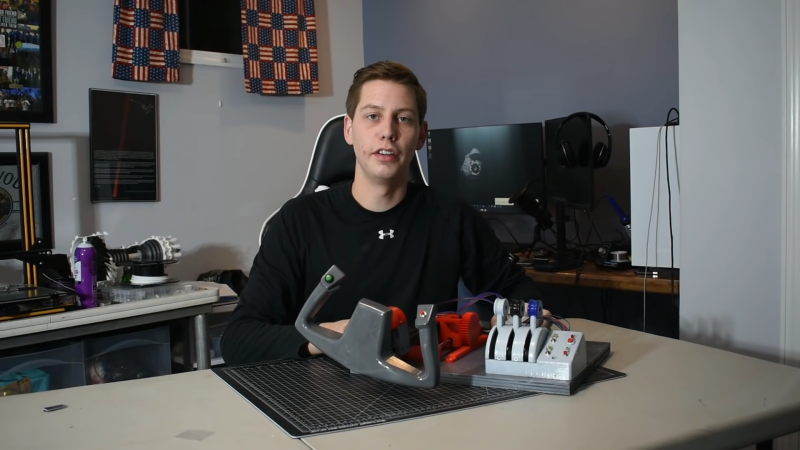Flight yokes are key to getting an authentic experience when playing a flight simulator, but [Michel Rechtin] didn’t want to pay big money for a commercially-available solution. He ended up building a design using a lot of parts he had laying around, which saved money and worked out great.
The build is based around an Arduino Micro, which reads a series of potentiometers from the yoke and pedals to control pitch, roll, and yaw, A series of buttons are then added to control ancillary functions for the plane and simulator software.
Much of the build uses old 3D printer components, including linear bearings and rods for the pitch axis for smooth operation. There’s even a throttle setup and some more buttons and switches for a more complete flying experience.
Files are available on Thingiverse from anyone looking to replicate [Michael]’s build. We love to see a yoke built from scratch, though we’ve also seen creative builds repurpose PlayStation controllers for the same purpose. Video after the break.















I hope he used a high level of infill for the handle because for a good feeling it needs to have some weight and not flex. Adding feedback would also be nice but that is a project unto itself.
With the effort already put in (assuming they are enjoying it) I think its worth going that step further and using the 3d model to create mold to fiberglass or CF for ultimate stiffness, great looks and being hollow so you can run the cables safely inside.
Still its a really neat project, that once again makes me feel somewhat inadaquate as I’ve had doodles of exactly what I want in a flight controller and not found the time to tinker, heck not found much time to play the sims either (I prefer Elite Dangerous type games so more axis than your normal hotas would be good).
Even considered feedback as you suggest, the most interesting and useable method to me seems to be pumped hydraulic damper style – have a piston with holes in its face to allow flow through when held but resist said flow enough to give feedback and ‘self centre’ to whatever the software defined set point is (maybe even dynamically) – that way for example the same throttle lever can be centre, top or bottom biased, fight you more or less entirely based on which game/craft/situation you are in, but no matter what can’t get stuck, snagged, jammed by anything and damage you or itself.